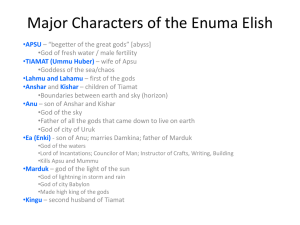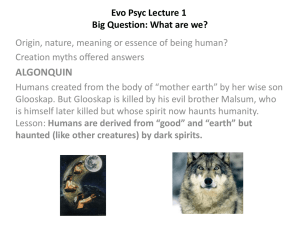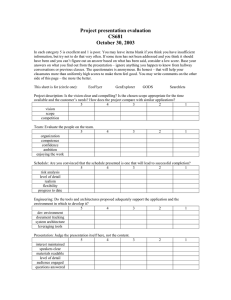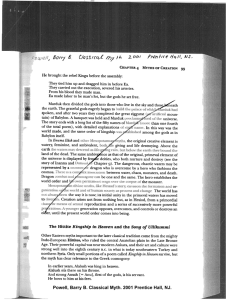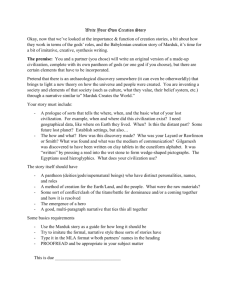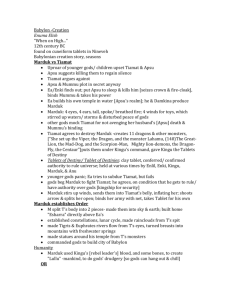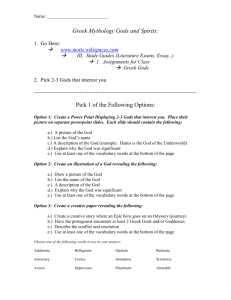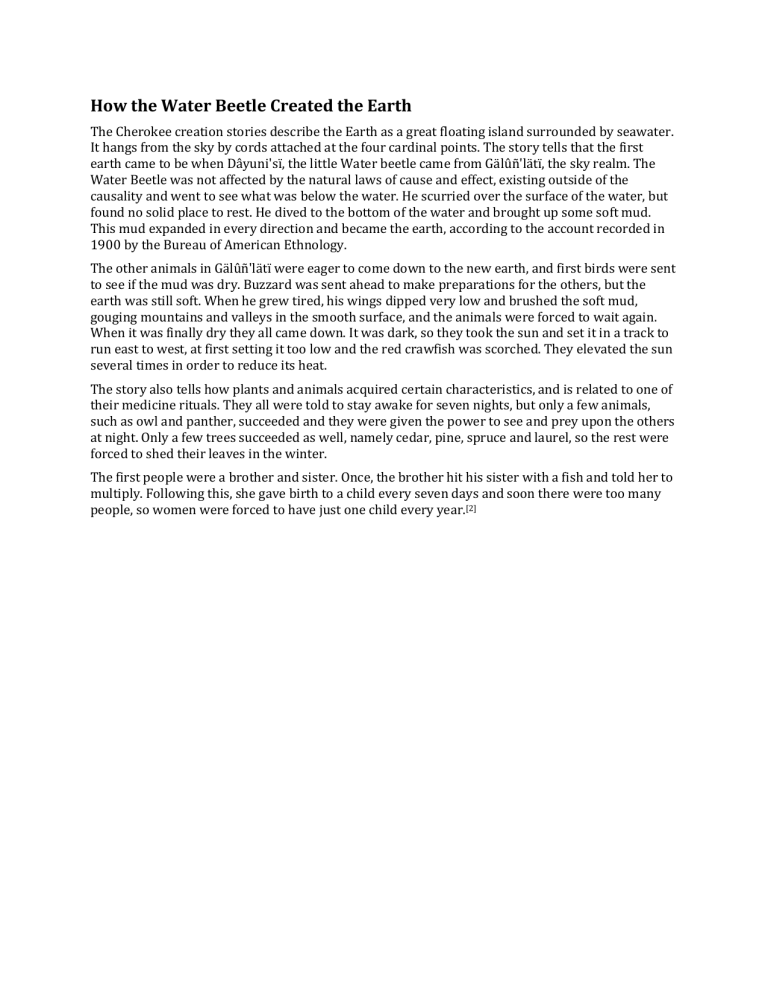
How the Water Beetle Created the Earth The Cherokee creation stories describe the Earth as a great floating island surrounded by seawater. It hangs from the sky by cords attached at the four cardinal points. The story tells that the first earth came to be when Dâyuni'sï, the little Water beetle came from Gälûñ'lätï, the sky realm. The Water Beetle was not affected by the natural laws of cause and effect, existing outside of the causality and went to see what was below the water. He scurried over the surface of the water, but found no solid place to rest. He dived to the bottom of the water and brought up some soft mud. This mud expanded in every direction and became the earth, according to the account recorded in 1900 by the Bureau of American Ethnology. The other animals in Gälûñ'lätï were eager to come down to the new earth, and first birds were sent to see if the mud was dry. Buzzard was sent ahead to make preparations for the others, but the earth was still soft. When he grew tired, his wings dipped very low and brushed the soft mud, gouging mountains and valleys in the smooth surface, and the animals were forced to wait again. When it was finally dry they all came down. It was dark, so they took the sun and set it in a track to run east to west, at first setting it too low and the red crawfish was scorched. They elevated the sun several times in order to reduce its heat. The story also tells how plants and animals acquired certain characteristics, and is related to one of their medicine rituals. They all were told to stay awake for seven nights, but only a few animals, such as owl and panther, succeeded and they were given the power to see and prey upon the others at night. Only a few trees succeeded as well, namely cedar, pine, spruce and laurel, so the rest were forced to shed their leaves in the winter. The first people were a brother and sister. Once, the brother hit his sister with a fish and told her to multiply. Following this, she gave birth to a child every seven days and soon there were too many people, so women were forced to have just one child every year.[2] Heliopolis (Egyptian) In Heliopolis, the creation was attributed to Atum, a deity closely associated with Ra, who was said to have existed in the waters of Nu as an inert potential being. Atum was a self-engendered god, the source of all the elements and forces in the world, and the Heliopolitan myth described the process by which he "evolved" from a single being into this multiplicity of elements.[14][15] The process began when Atum appeared on the mound and gave rise to the air god Shu and his sister Tefnut,[16] whose existence represented the emergence of an empty space amid the waters.[17] To explain how Atum did this, the myth uses the metaphor of masturbation, with the hand he used in this act representing the female principle inherent within him.[18] He is also said to have "sneezed" and "spat" to produce Shu and Tefnut, a metaphor that arose from puns on their names.[19] Next, Shu and Tefnut coupled to produce the earth god Geb and the sky goddess Nut, who defined the limits of the world.[20] Geb and Nut in turn gave rise to four children, who represented the forces of life: Osiris, god of fertility and regeneration; Isis, goddess of motherhood; Set, the god of chaos; and Nephthys, the female complement of Set. The myth thus represented the process by which life was made possible. These nine gods were grouped together theologically as the Ennead, but the eight lesser gods, and all other things in the world, were ultimately seen as extensions of Atum. Mesoamerican creation myths Mesoamerican creation myths are the collection of creation myths attributed to, or documented for, the various cultures and civilizations of pre-Columbian Mesoamerica and Mesoamerican literature. The Maya gods included Kukulkán (also known by the K'iche' name Gukumatz and the Aztec name Quetzalcoatl) and Tepeu. The two were referred to as the Creators, the Forefathers or the Makers. According to the story, the two gods decided to preserve their legacy by creating an Earthbound species looking like them. The first attempt was man made from mud, but Tepeu and Kukulkán found that the mud crumbled. The two gods summoned the other gods, and together they decided to make man from wood. However, since these men had no soul and soon lost loyalty to the creators, the gods destroyed them by rain. Finally, man was constructed from maize, the Mayans staple and sacred food. The deity Itzamna is credited as being the creator of the calendar along with creating writing. Âu Cơ (Vietnam) Âu Cơ was a young, beautiful fairy who lived high in the mountains. She traveled to help those who suffered from sicknesses since she was very skillful in medicine and had a sympathetic heart. One day, a monster suddenly appeared before her while she was on her traveling, it then frightened her, so she tried to escape by transforming into a crane to fly away. Lạc Long Quân, the dragon king from the sea, passed by and saw the beautiful lady in danger, so he grabbed a rock from nearby and killed the monster. When Âu Cơ stopped flying to see the very person that saved her, she turned back into a fairy and instantly fell in love with her benefactor. She soon bore an egg sac, from which hatched a hundred children. However, despite their love for each other, Âu Cơ had always desired to be in the mountains again and Lạc Long Quân, too, yearned for the sea. They separated, each taking 50 children. Âu Cơ settled in mountainous northern Vietnam where she raised fifty young, intelligent, strong leaders, later known as the Hùng Vương, Hùng kings.[3][4] Ainu creation myths The Ainu creation myths are the traditional creation accounts of the Ainu peoples of Japan. Their stories share common characteristics with Japanese creation myths and earth diver creation stories commonly found in Central Asian and Native American cultures.[1] Ainu mythology divides time into three tenses: "Mosir sikah ohta" ("when the universe was born"), "mosir noskekehe" ("centre of the world"), and "mosir kes" ("end of the world" , from which there no detailled concepts known from Ainu mythology)[2]. In one version, the creator deity sends down a water wagtail to create habitable land in the watery world below. The little bird fluttered over the waters, splashing water aside, and then he packed patches of the earth firm by stomping them with his feet and beating them with his tail. In this way, islands where the Ainu were later to live were raised to float upon the ocean.[1][3] Because Ainu tend to be somewhat hirsute, at least in comparison to other East Asian populations, many Ainu stories maintain that their first ancestor was a bear. However, an alternative version tells of Kamuy sending a heavenly couple to earth called Okikurumi and Turesh. This couple had a son, whom some consider the first Ainu, and he is believed to have given the people the necessary skills to survive.[1] English missionary John Batchelor related a myth the Ainu told him wherein before the first kamuy created the world, there was only a vast swamp in which lived a large trout, and the creator placed the world upon the trout, so that the fish sucks in and spits out water from the sea, causing the tides.[4] Maori people of the Pacific Dawn of the universe In one generalised telling of the universe's creation: in the beginning there was Te Kore (The Nothing; Void) which became Te Korematua (The Parentless Void) in its search for procreation.[8] From it came Te Pō (The Night), becoming Te Pōroa (The Long Night), and then becoming Te Pōnui (The Great Night). Gradually Te Ao (The Light) glimmered into existence, stretching to all corners of the universe to become Te Aotūroa (The Long-Standing Light).[9] Next came Te Ata (The Dawn), from which came Te Mākū (The Moisture), and Mahoranuiatea (Cloud of the Dawn). Te Mākū and Mahoranuiatea wed to form Rangi.[10]:56 Earth's creation Generally, Rangi's wife is Papa, though they are known throughout Polynesia, even when they're not considered spouses.[12]:892 The pair laid in a tight embrace which blocked light from touching the world.[9] From them came the children Haumia, Rongo, Tāwhiri, Tangaroa, Tū, and Tāne. Some traditions may list some of these children alongside Rehua, Urutengangana, Aituā, Tiki, Whiro, or Ruaumoko, among others. Often, a war or skirmish between the siblings ends with them becoming the ancestors of certain concepts, habitats, mannerisms, animals, tools, or plants that they each represent. For instance Tāne became Tāne Mahuta, the father of birds and the forest,[9] and Tū became Tūmatauenga, the father of humanity and its activities, such as war. Sometimes, Tāne Mahuta ascends to the sky after Ranginui to dress him with stars, who mourns for his wife every time it rains. Similarly, Papatūānuku strains in an effort to reach the sky, causing earthquakes, and the mist comes from her sighing. In a version involving Urutengangana, Whiro, Tāwhiri, Tangaroa, Tuamatua, Tumatakaka, Tū, Paia, and Tāne; Tāwhiri "finally" agreed to the separation, while Whiro was against it. Tāne instructed Tumatakaka and Tū to fetch axes with which to cut Rangi's arms off, and the blood that dripped from him down onto Papatūānuku is said to be where the red sunset now comes from, as well as the origin of the colours red and blue in painting: red oxide and blue phosphate of iron.[citation needed] This is very different to the telling in which Tāne discards Tū's suggestions to slaughter the parents to ensure their separation, where Tāwhiri is the brother most upset by the idea to separate the parents at all. Enuma Elish (Babylonian) Before anything else exists, two primeval gods, Apsu and Tiamat, dwell together. In time, more gods are begotten out of the mixing of the two gods’ waters—notably Lahmu and Lahamu, Anshar, Anu, and Nudimmud, or Ea. When the younger gods get together, their noisy clamor disturbs Apsu and Tiamat. Apsu proposes that the gods be destroyed so that he and Tiamat can get some sleep, but Tiamat is furious at this idea, wanting to indulge their offspring. However, behind Tiamat’s back, Apsu’s vizier Mummu wickedly urges him to destroy the gods anyway. Ea, the wisest of the gods, finds out Apsu’s plan, lulls him with a spell, and slays him in his sleep. He builds a dwelling atop Apsu’s remains and, with his lover, Damkina, begets Marduk there. From his birth, Marduk is the most awesome of all the gods. When Marduk plays with the winds, Tiamat’s waters become restless, and none of the older gods can sleep. They beseech Tiamat to avenge Apsu’s slaying and enable them to sleep. Tiamat is pleased by this suggestion, agreeing that Ea and those younger gods who dwell with him deserve evil in their turn. Tiamat begins creating fearful creatures, such as deadly snakes, dragons, and demons, to join her battle-force. She also appoints her lover, Qingu, as king and commander of her army. Ea finds out about Tiamat’s battle preparations and reports to his father, Anshar, who sends him to settle the conflict; however, Ea is intimidated by Tiamat and quickly admits defeat. Before the gods can despair, Marduk steps forward, offering to confront the fearsome goddess. Anshar agrees, but first, Marduk asks that the other gods recognize him in a special council. Accordingly, the gods gather at a celebratory banquet, where they champion Marduk as their sovereign. They equip Marduk with an array of powerful weapons and send him off to subdue and conquer the chaotic Tiamat. Marduk quickly shakes off Tiamat’s spell of deception and challenges her to single combat. Enraging Tiamat with accusations, Marduk quickly nets her, fills her with fierce whirlwinds, and slays her. After triumphing over Tiamat, Marduk uses her remains to build the earth, making the Tigris and Euphrates rivers from the water that flows from her eyes. All the gods pay homage to Marduk as their King. Then he announces that he will build Babylon to be the home for the gods and the center of religion. Marduk and Ea create humanity from the blood of Qingu and impose the labors of the gods—such as preserving order amongst creation—upon humanity. Then the gods get to work constructing shrines for themselves in Babylon. When their work is done, they all gather at a final banquet, where they solemnly recite the fifty titles and attributes of Marduk. Creek Nation Creation Myth The Creek believed that the world was originally entirely underwater. The only land was a hill called Nunne Chaha on which is the home of Hesaketvmese (meaning "master of breath"; pronounced Hisakita imisi), a solar deity also called Ibofanga ("the one who is sitting above (us)"). He created humanity from the clay on the hill. In the underworld, there was only chaos and odd creatures. Master of Breath created Brother Moon and Sister Sun, as well as the four directions to hold up the world. The Creek also venerated the Horned Serpent Sint Holo, who appeared to suitably wise young men. The first people were the offspring of Sister Sun and the Horned Serpent. These first two Creeks were Lucky Hunter and Corn Woman, denoting their respective roles in Creek Society.
